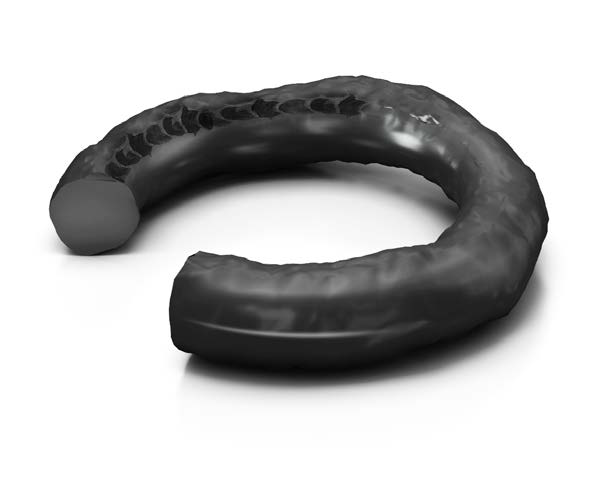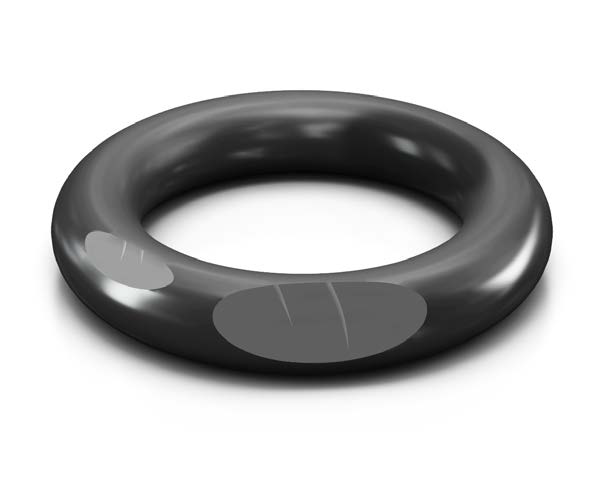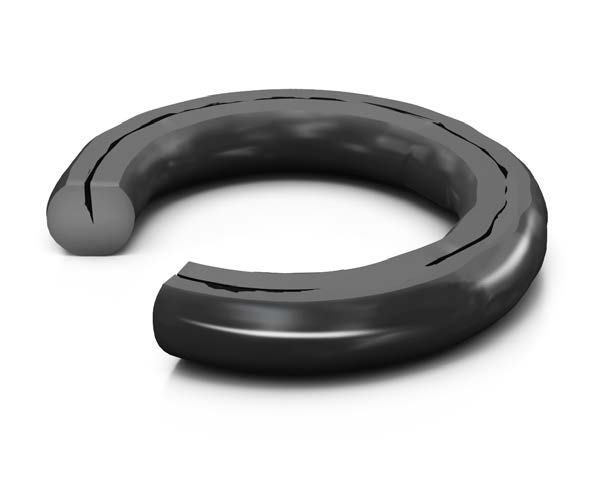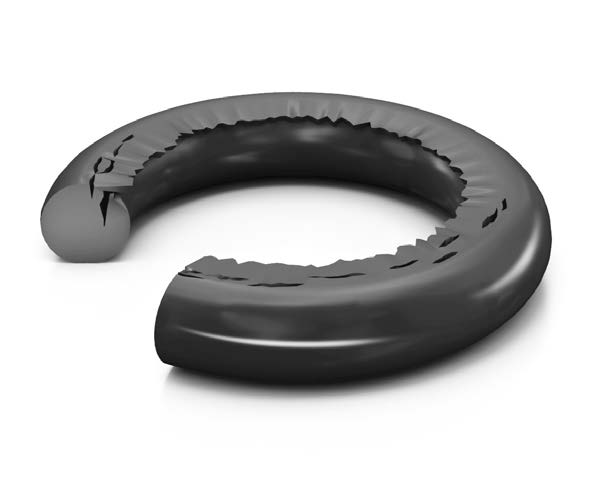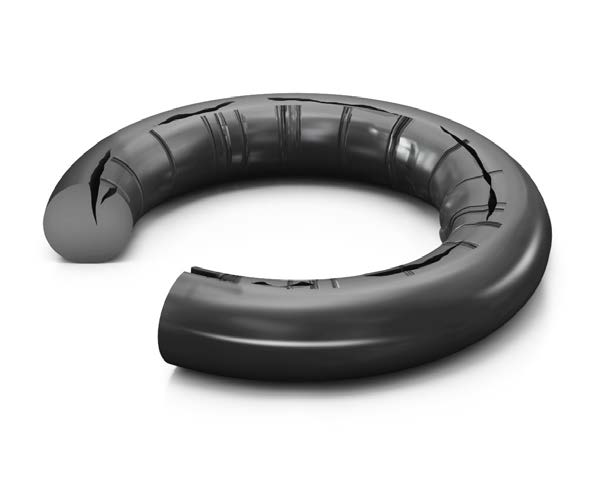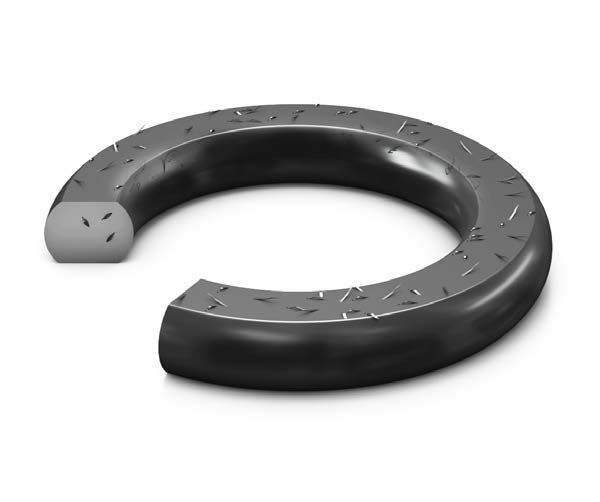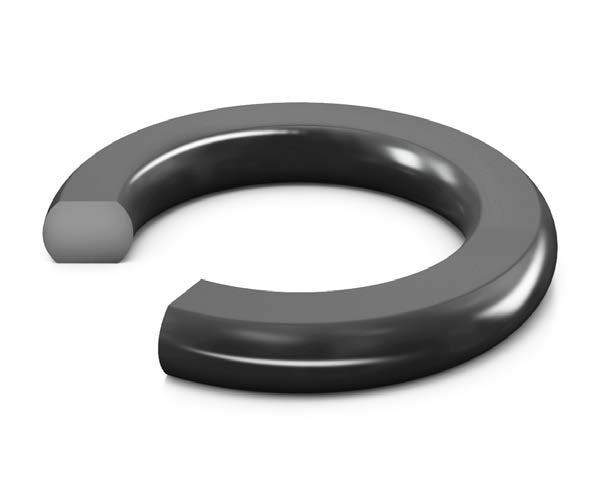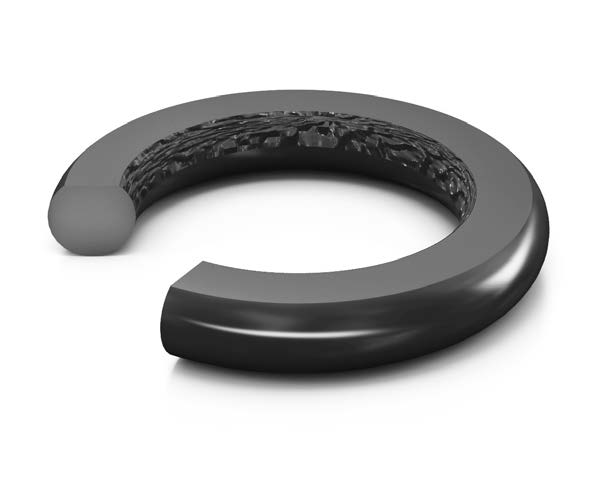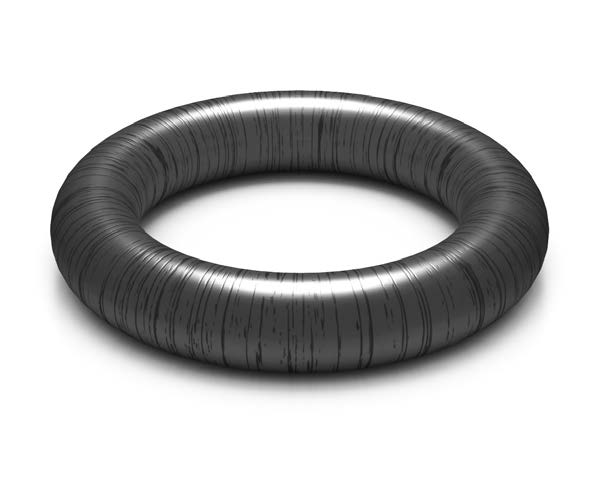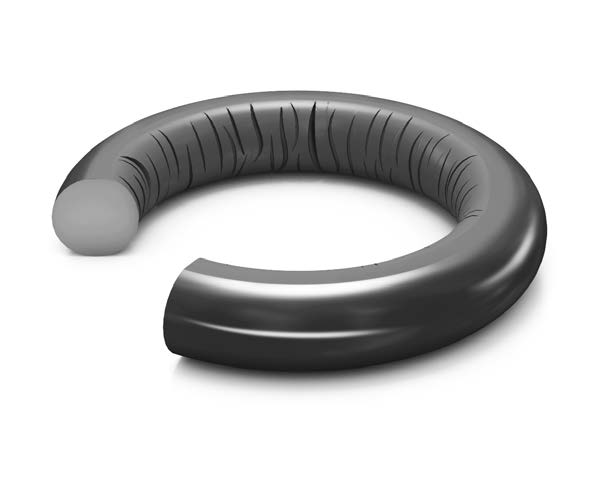O-Ring Failures
The failure types identified below are based on historical data and extensive industry research.
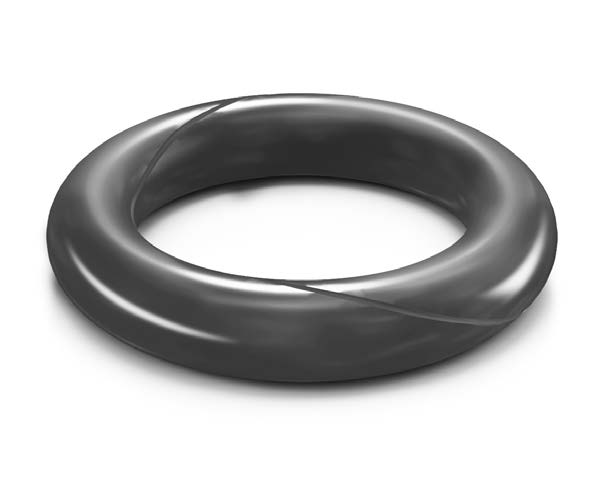
SPIRAL FAILURE
Indications: Cuts or marks spiraling around circumference.
Contributing Factors:
- Difficult or tight installation (static)
- Slow reciprocating speed
- Low-modulus/hardness elastomer
- Irregular O-Ring surface finish (including excessive parting line)
- Excessive gland width
- Irregular or rough gland surface finish
- Inadequate lubrication


